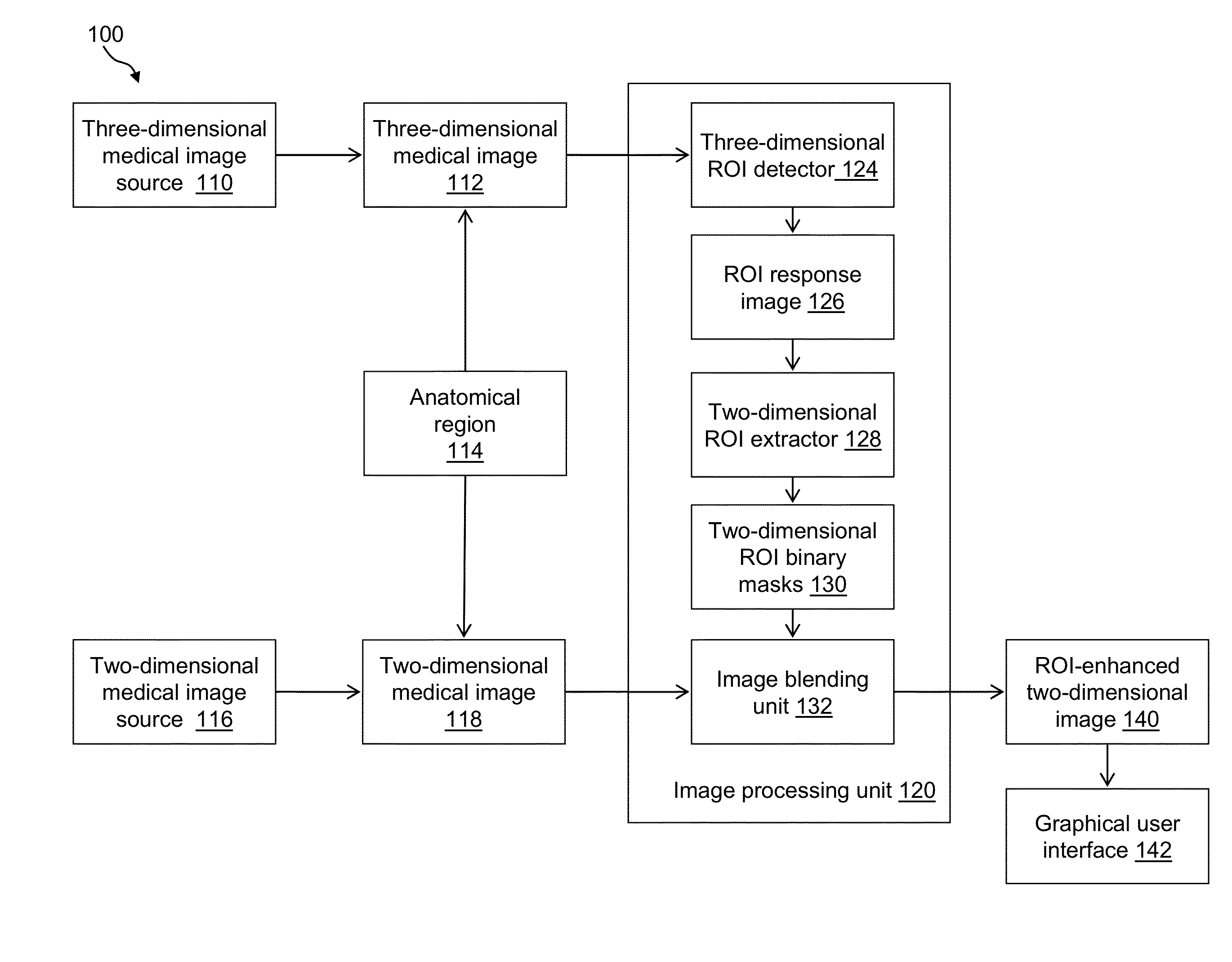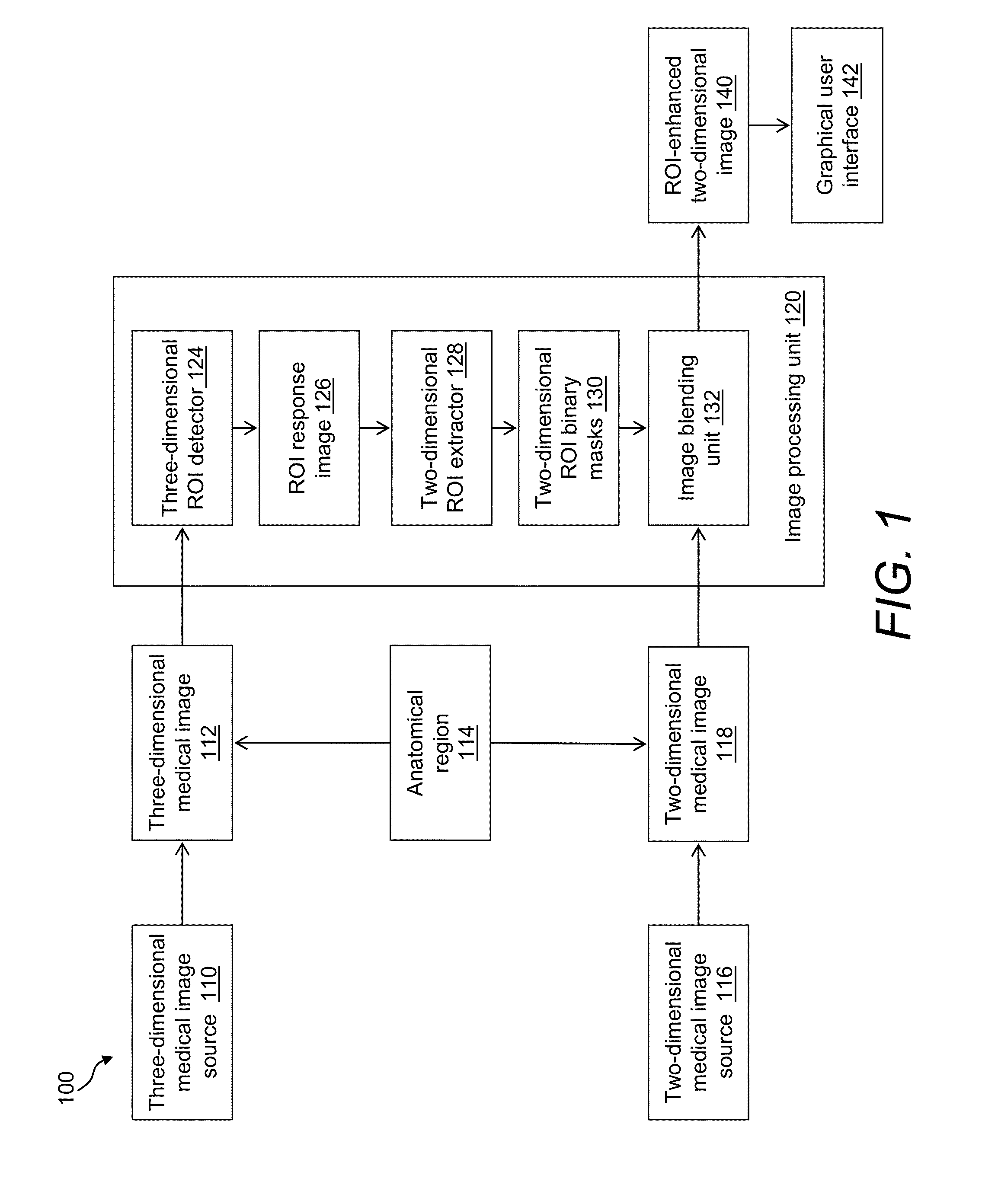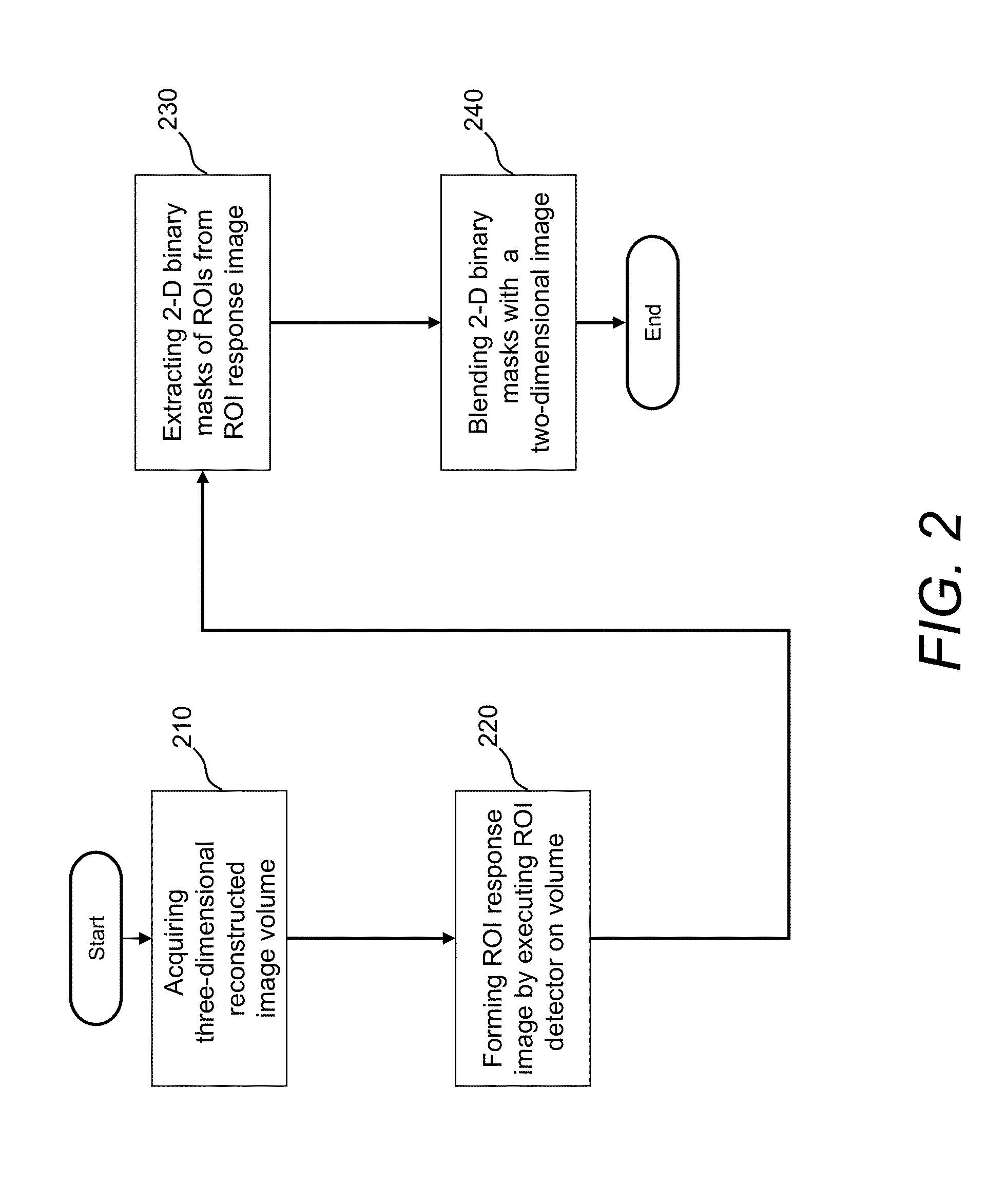System and method for improving workflow efficiences in reading tomosynthesis medical image data
a technology of medical image data and workflow efficiency, applied in the field of image processing, can solve the problems of a large amount of image data produced by 3d medical imaging procedures, and achieve the effects of enhancing the identification of regions, avoiding sacrificing desired detail in images, and improving workflow efficiency in reading
- Summary
- Abstract
- Description
- Claims
- Application Information
AI Technical Summary
Benefits of technology
Problems solved by technology
Method used
Image
Examples
Embodiment Construction
[0016]FIG. 1 is a block diagram of a medical imaging system 100 in accordance with an illustrative embodiment. The system includes a three-dimensional medical image source 110, a two-dimensional medical image source 116, and an image processing unit 120 that produces a novel, region of interest (ROI)-enhanced two-dimensional image 140 that can be the primary image read for detection and diagnosis of disease by a diagnostician. The system 100 further includes a graphical user interface (GUI) and / or display 142 for outputting the various medical image data. It should be noted that a wide range of functional components can be provided to the system, 100 in various embodiments, including various networked data-handling and storage devices, additional displays, printing devices, interfaces for portable computing devices, etc.
[0017]According to an embodiment, the three-dimensional medical image source 110 is a digital tomosynthesis imaging system such as offered by the General Electric Co...
PUM
 Login to View More
Login to View More Abstract
Description
Claims
Application Information
 Login to View More
Login to View More - R&D
- Intellectual Property
- Life Sciences
- Materials
- Tech Scout
- Unparalleled Data Quality
- Higher Quality Content
- 60% Fewer Hallucinations
Browse by: Latest US Patents, China's latest patents, Technical Efficacy Thesaurus, Application Domain, Technology Topic, Popular Technical Reports.
© 2025 PatSnap. All rights reserved.Legal|Privacy policy|Modern Slavery Act Transparency Statement|Sitemap|About US| Contact US: help@patsnap.com



